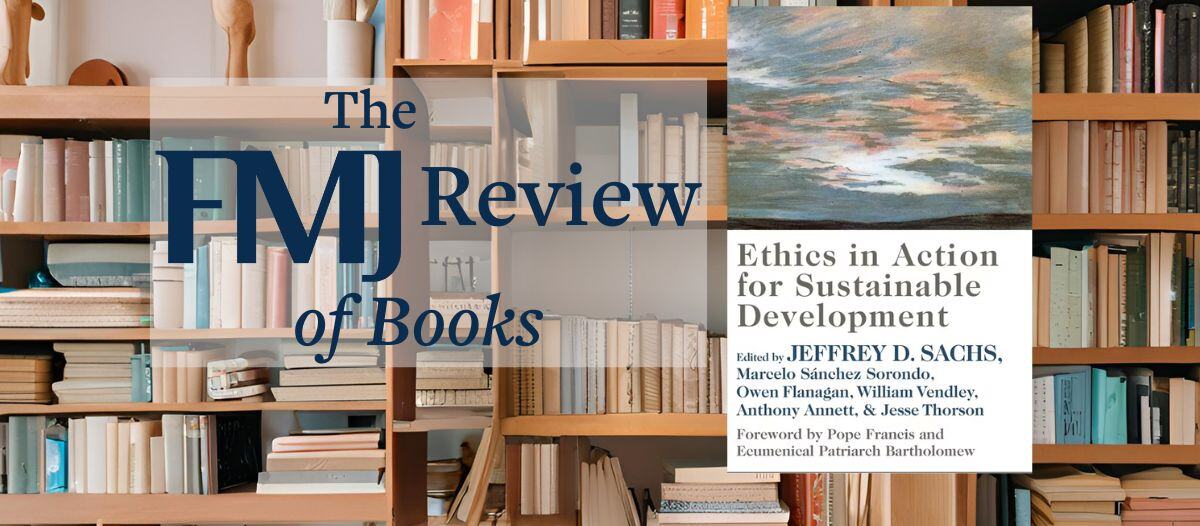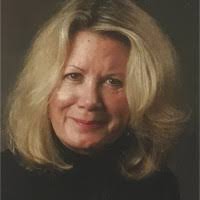Book Review
Ethics in Action for Sustainable Development

We are in a period when risk surrounds us. We are in the midst of a polycrisis defined by economic and social inequality, global environmental and health crises, war and massive disaster recovery. We are trying to figure out where we are in the beginning of a new century, how we got here, and how we should reimagine a better future. To help us figure out these weighty questions in a time of “VUCA squared,” two amazing economists have published books to help us create a new mindset to transform our industry. Together they provide a 21st century alternative to GDP ranking and a new moral framework for all of humanity. Both books include positioning of the critical UN’s 17 Sustainable Development Goals (SDGs) which are necessary to right the wrongs of our past exploitation of people, places and the planet, while providing a framework for new, transformative practices for education, institutions and businesses.
The Authors
It is almost unconceivable that Jeffrey Sachs accomplishes as much as he does as an economist, academic, public policy analyst, author and professor at Columbia University where he is the Director of Sustainable Development. He has served as an adviser to three UN secretaries-general and currently is the SDG Advocate under the Secretary-General Antonio Gutierrez, as well as being the co-editor of the yearly ‘World Happiness Report’ (www.worldhappiness.report). His previous book is the Ages of Globalization. Geography, Technology and Institutions (2020). Both of these publications are worth a read.
Kate Raworth, a radical economist, academic and consultant teaches at Oxford University’s Environmental Change Institute, Cambridge University's Institute of Sustainable Leadership and Amsterdam University of Applied Sciences. In 2021, she was appointed by another brilliant economist, Marianne Mazzucato, to the UN's World Health Organization (WHO) Council on the Economics of Health for All. Many of Raworth’s inspirational talks are available on YouTube.
These books do not have to be read in the same way. Reading Raworth is like going to a table and having a meal, taking in a few chapters at a sitting, sequentially following her storylines. Sachs’ book is formidable and should be approached like going to a buffet and choosing the authors and articles which interest you most, absorbing their content, then returning to the same table at another time for a different selection. I began with his chapters first (1,3,5,7), followed by Chapters 6, 12 and Conclusion and then with the remaining chapters.
The Books
1. Ethics in ActionA group of international theologians (representing Christianity, Islam, Buddhism, Judaism, Hinduism, Confucianism and First Nation religions), philosophers, academic experts and practitioners standing in front of a building in Vatican City, Rome. are shown in a photo at the beginning of Sachs’ book. They were there for one of a series of meetings convened by Pope Francis from October 2016-December 2018, designed to “help nurture a strong sense of the common good and an agreement that there can be no distinction between concern for human welfare, protection of the environment and care for our salvation.”
This Ethics in Action group wrote about their ideas from these meetings in Sachs compendium of articles which explain a moral framework for the world to operate. They are “adding true value to society and meeting the needs of the poor, raising living standards, helping society to meet basic needs and innovating to read enrich our lives as opposed to profits at all costs." And it is the SDGs which are this framework for humanity to achieve ‘the common good.’
Two of the expert authors, Anthony Annett and Jesse Thorson, summed up the work of this diverse team as the need for a ‘moral economy’ which “recognizes universal human dignity and is oriented to the common good: a vision of the good held in common that significantly recognizes our interdependence and shared well-being. It is fueled neither by relentless profit seeking nor by a belief that technical advances can solve all problems. It involves the well-being of all, with special attention to the poor and the least well off.”
This moral economy is concerned not only with the strictly financial or transactional dimensions of society, but also its social and political components, which also shape and guide how individuals and groups relate to and interact with one another. “A moral economy not only guides us to act in the interest of the common good, but also teaches us to truly desire the common good, a task in which religious institutions ought to be playing a larger role.” The common good is embedded in the SDG framework.
By reading Ethics in Action, one can understand why it is so important to embed the SDGs in all the relevant work we do in the built environment. One way to do this is to consider supporting the doughnut economy.
2. The Donut Economy
Kate Raworth begins her book with a question: who wants to be an economist? Every year 400 higher education institutions graduate 900 PHD's in this subject. The problem is that what they are taught in these classrooms is rooted in 1950s textbooks thinking which looks back to 1850 theories. This is what Raworth rebelled against upon graduating from Oxford University and why is she defined seven ways to think about 21st century economics which are the subjects of each chapter in the book. These are:
- Change the Goal: 70 years of a GDP goal no longer relevant as it has ignored human rights and the planet;
- See the Big Picture: the circular economy includes both society and nature;
- Nurture Human Nature: how we are interdependent with the natural world;
- Get Savvy with Systems: learn systems thinking early in education;
- Design to Distribute: design economics to distribute value including wealth;
- Create to Regenerate: understand earth’s cyclical processes for their application to our lives;
- Be Agnostic about Growth: the objective should be to make all of humanity thrive.
The first chapter describes the “21st century compass for guiding humanity” which is the doughnut. The inner ring represents the twelve basic life requirements, most of which are included in the SDGs. The outer ring is the planet’s ecological ceiling determined by the 9 critical processes that regulate the Earth’s ability to maintain stability to allow humanity to thrive. Between these boundaries is the sweet spot, the ecologically safe and socially just space for humanity. The outer ring should not be breached.
In each chapter, Raworth writes about the economists who influenced the field at the time, beginning with the Greeks who called it the ‘art of household management.' It was considered a science by the 18th century when Adam Smith, who some consider the “father” of modern economics, viewed it more comprehensively as a system. Its purpose was to supply revenue or subsistence for people with enough for public services offered by the state. Later, specific laws became attached to economics with goals to guide how society managed its resources. These goals evolved into GDP growth as the measure of economic efficiency, productivity and wealth of a nation.
At the same time, there were alternative ideas to this overriding principle of growth. They began in the 19th century with the Swiss economist, Jean Sismondi’s approach to adding humanity back into the story and enhanced by the Renaissance-man, John Ruskin’s writings, which revealed that there was economic value in wealth that was embedded in human-made assets, people and a thriving biosphere. In the 20th century, Mahatma Ghandi, influenced by Ruskin, strove to create a new economy in India that elevated the moral being. Later, E.F. Schumacher’s “small is beautiful” became a new aesthetic adding ethics and human scale into economic thinking. By 2008, French President Nicholas Sarkozy included social progress to economic measurement. Three years later Raworth created the Doughnut Economy while working at Oxfam, a global anti-poverty organization.
The Action
The interesting aspect of these books is that their contents are not just good histories, analyses and theories, but contain meaningful new ideas that these authors are actively applying to global transformations:
-
The Ethics in Action authors include the following work toward SDG transformation:
-
In education, Maryanne Wolf, a Professor at UCLA working in cognitive neuroscience and developmental psycholinguistics, is creating a digital app for her global literacy initiative to reach 100 million children which, in turn, could reduce poverty by 12%.
-
In business, Jennifer Gross co-founded the Blue Chip Foundation at the same time as the announcement of the SDGs, and whose mission is to influence businesses as agents of Sustainable Development. The pledge to the ‘Ten Corporate Commandments’ reorients business activity around ‘the common good’ (www.bluechipfoundation.org).
-
Jeffrey Sachs also leads the UN Sustainable Development Solutions Network (SDSN) which has created the SDG Transformation Center to be launched this September. It will be the first platform for learning and exchange on SDG data, policies and financial instruments. SDSN has partnered with the GIS leader, Esri, for visualization of the data for mapping and analytics. This organization is invaluable for higher education institutions including the SDGs in all of their programs (Yale and ASU are great examples).
- Kate Raworth has created the Doughnut Economy Action Lab (DEAL):
This is an open-source commons for the work that is being done around the world implementing the ideas from the book (https://donoughteconomics.org). It was created by the DEAL team and members of the community and includes the following topics: communities and art, cities and places, education and research, business and enterprises, as well as government and policy. On this site, stories of implementations, networks, maps of members’ locations and tools can be found to help foster new economic practices.
From the site: “We work with changemakers worldwide – in communities, education, cities and places, business and government and more – who are turning the ideas of Doughnut Economics into transformative action and aiming to bring about systemic change. Our name is very intentional: we are focused on action and always learning through experiment. DEAL was founded as a Community Interest Company in July 2019, and we launched our Community Platform online in September 2020.” Amsterdam is one of DEAL’s most comprehensive city projects with the urban administration using the Doughnut model to emerge from the pandemic with a new transformative mindset for plans for the Re:20s.
The Conclusion
Personally, I realized, as I wrote this review, that I am an activist economist. The birds are chirping frantically on this unusually warm February day, providing a melodic background as my thoughts pour out as I sit in the midst of my recultivated garden reseeded with native North Carolina plants, set to bloom in a few months in this rewilded landscape. I am currently using the SDGs as the framework for the work I am doing with the sub-group I work with on the UN NGO Task Force in the IFMA Foundation in our involvement with UNESCO, as well as the development work I do on the Board of the Greensboro Opera bringing the SDGs to bridge the world of culture with local businesses. I am also thinking of how to expand Dr. Allen’s concept of ‘buildingomics’ from just health and well-being to other areas impacting the SDGs in the built environment. But this story is for another time and place.

Nancy Sanquist, IFMA Fellow, is a professional involved in the built environment for the last few decades. She is the Past Chair of the IFMA Foundation, with which she has worked for the last six years. She is a co-founder of the Global Workforce Initiative (GWI) and the Workplace Evolutionaries, and is the author of many articles and co-editor of books on FM/CRE, technology, architecture, urban planning and maintenance including the award-winning book series titled “Work on the Move (1&2).” She is working on a new book on “Reimagining Place in the 21st Century.”
Read more on Leadership & Strategy and Sustainability
Explore All FMJ Topics









